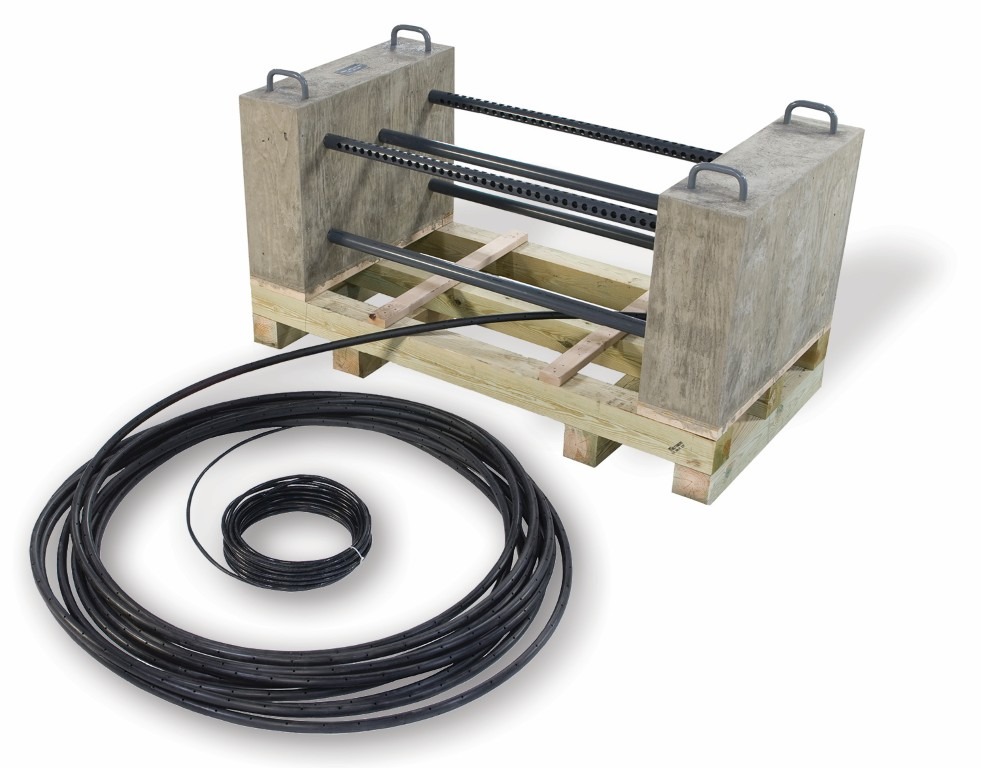
MATCOR is a leading manufacturer of impressed current sled anode systems and as such we tend to get asked a lot of questions about sled anodes. Here are some frequently asked questions:
These are two related questions, and both have to do with the conductivity (or resistivity which is merely the inverse of conductivity) of the water where the anodes will be located. The conductivity of the water plays a critical role in determining the overall system resistance and current output of the system. For freshwater locations, the relatively low water conductivity requires a significant quantity of anodes to keep the overall system resistance down. In those instances, a sled anode may not be the best design option as sled anodes are most cost effective in brackish or saltwater environments. For environments where the conductivity can vary seasonally or with the tides, such as estuaries or tidal river boundaries, special consideration may be required such as constant current or auto-potential controlled power supplies.
Depending on the application, there are compelling reasons for the use of each type of system. Galvanic anodes do not require an external power supply, are less subject to interference issues, and can be closely coupled directly to the structure. The impressed current sled anodes can greatly simplify installation, reduce overall costs, typically have a longer life, and can produce a lot more current from a lot fewer anodes. The choice of anode type is very much a site-specific consideration requiring a proper engineering evaluation during the design phase.
Marine wildlife is generally unaffected by the presence of a cathodic protection system. Cathodic protection systems have been used in commercial aquariums and fish hatcheries without any impact on the marine life. At the structure, cathodic protection can result in a localized environment that reduces or inhibits the growth of barnacles while changes in the pH at the structure’s surface encourage the growth of calcareous deposits which reduce the current requirements and provide a form of protective coating for the steel structure.
We have not experienced any such problems – the wooden base is designed to sink into the mud along the sea floor and provide an anchor. Wood holds up very well in this environment; however, over time the wood will slowly become food for cellulose processing bacteria and eventually will slowly be degraded. This process is a natural process and occurs over a long period of time. There is no expectation that the wood base would break into pieces that could damage an intake structure. MATCOR can provide an inert non-metallic plastic base that would be like wood but not subject to natural biodegradation.
MATCOR utilizes an HMWPE cable that has a very robust exterior jacket that is suitable for direct burial in soil or water environments. The cable is housed inside a 1” diameter flexible drilled PE pipe that provides mechanical protection for the cabling. We recommend the use of concrete weights to secure the cable along the seafloor. The drilled PE pipe holes facilitate the cabling sinking into the seafloor mud providing additional protection for the cabling.
For locations that are subject to occasional periodic dredging operations every few years or so, MATCOR can provide a locator float and lifting lugs to allow for the anodes to be removed prior to dredging operations. If the frequency of the dredging operations is such that this would be a regular occurrence (multiple times per year), then consideration should be given to alternate designs that would not require anode removal on regular basis.
For information on MATCOR’s Sea-Bottom Marine Anode Sleds or for assistance with marine near shore cathodic protection system design, please contact us at the link below.
For a real-world example of this system in action, explore our technical case study on an impressed current anode system for jetty piling protection.
To understand the broader advantages of this technology, read about the Benefits of Impressed Current Cathodic Protection (CP) Systems.
Contact a Corrosion Expert





